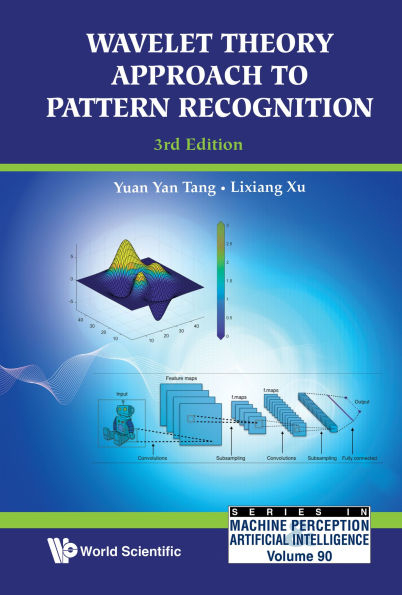This 3rd edition tackles the basic principle of deep learning as well as the application of combination of wavelet theory with deep learning to pattern recognition. Five new chapters related to the combination of wavelet theory and deep learning are added with many novel research results.
The useful reference text will benefit academics, researchers, computer scientists, electronic engineers and graduate students in the field of pattern recognition, image analysis, machine learning and electrical and electronic engineering.
Contents:
- Part 1:
- Introduction
- Part 2:
- Continuous Wavelet Transforms
- Multiresolution Analysis and Wavelet Bases
- Some Typical Wavelet Bases
- Basic Principle of Deep Learning
- Part 3:
- Step Edge Detection by Wavelet Transform
- Characterization of Dirac Edges with Quadratic Spline Wavelet Transform
- Construction of New Wavelet Function and Application to Curve Analysis
- Skeletonization of Ribbon-Like Shapes with New Wavelet Function
- Feature Extraction by Wavelet Sub-Patterns and Divider Dimensions
- Document Analysis by Reference Line Detection with 2D Wavelet Transform
- Chinese Character Processing with B-Spline Wavelet Transform
- Classifier Design Based on Orthogonal Wavelet Series
- Part 4:
- Deep Learning-Based Texture Classification by Scattering Transform with Wavelet
- An Approach to Image Classification by Deep Learning-Wavelet Architecture
- Brain Tumor Identification Based on Wavelet and CNN-LSTM Deep Learning
- Speech Enhancement Method Combining Wavelet and Deep Learning
Readership: Researchers, professionals, academics and graduate students in pattern recognition/image analysis, machine perception, AI and electrical and electronic engineering.
This 3rd edition tackles the basic principle of deep learning as well as the application of combination of wavelet theory with deep learning to pattern recognition. Five new chapters related to the combination of wavelet theory and deep learning are added with many novel research results.
The useful reference text will benefit academics, researchers, computer scientists, electronic engineers and graduate students in the field of pattern recognition, image analysis, machine learning and electrical and electronic engineering.
Contents:
- Part 1:
- Introduction
- Part 2:
- Continuous Wavelet Transforms
- Multiresolution Analysis and Wavelet Bases
- Some Typical Wavelet Bases
- Basic Principle of Deep Learning
- Part 3:
- Step Edge Detection by Wavelet Transform
- Characterization of Dirac Edges with Quadratic Spline Wavelet Transform
- Construction of New Wavelet Function and Application to Curve Analysis
- Skeletonization of Ribbon-Like Shapes with New Wavelet Function
- Feature Extraction by Wavelet Sub-Patterns and Divider Dimensions
- Document Analysis by Reference Line Detection with 2D Wavelet Transform
- Chinese Character Processing with B-Spline Wavelet Transform
- Classifier Design Based on Orthogonal Wavelet Series
- Part 4:
- Deep Learning-Based Texture Classification by Scattering Transform with Wavelet
- An Approach to Image Classification by Deep Learning-Wavelet Architecture
- Brain Tumor Identification Based on Wavelet and CNN-LSTM Deep Learning
- Speech Enhancement Method Combining Wavelet and Deep Learning
Readership: Researchers, professionals, academics and graduate students in pattern recognition/image analysis, machine perception, AI and electrical and electronic engineering.

WAVELET THEO APPR PATTE..(3RD ED)
564
WAVELET THEO APPR PATTE..(3RD ED)
564
Product Details
| ISBN-13: | 9789811284069 |
|---|---|
| Publisher: | WSPC |
| Publication date: | 08/27/2024 |
| Series: | SERIES IN MACHINE PERCEPTION & ARTIFICIAL INTELL , #90 |
| Sold by: | Barnes & Noble |
| Format: | eBook |
| Pages: | 564 |
| File size: | 75 MB |
| Note: | This product may take a few minutes to download. |
